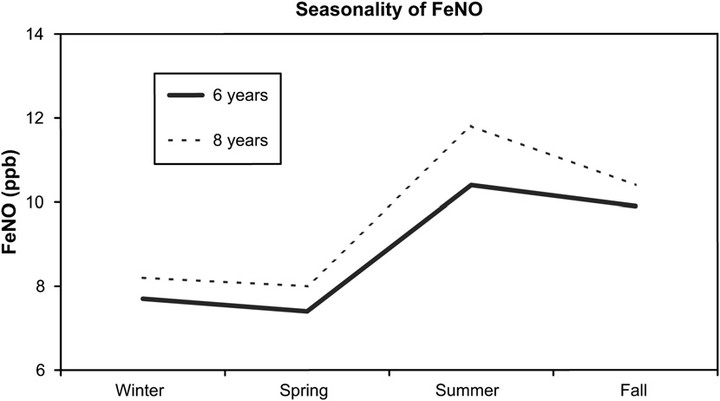Fractional exhaled nitric oxide measurements are most closely associated with allergic sensitization in school-age children

Abstract
BACKGROUND: Factors affecting fractional exhaled nitric oxide (FeNO) in early childhood are incompletely understood. OBJECTIVE: To examine the relationships between FeNO and allergic sensitization, total IgE, atopic dermatitis, rhinitis, asthma, and lung function (spirometry) in children. METHODS: Children at high risk of asthma and other allergic diseases because of parental history were enrolled at birth and followed prospectively. FeNO was measured by an online technique at ages 6 and 8 years. Relationships among FeNO, various atopic characteristics, and asthma were evaluated. RESULTS: Reproducible FeNO measurements were obtained in 64% (135/210) of 6-year-old and 93% (180/194) of 8-year-old children. There was seasonal variability in FeNO. Children with aeroallergen sensitization at ages 6 and 8 years had increased levels of FeNO compared with those not sensitized (geometric mean; 6 years, 10.9 vs 6.7 parts per billion [ppb], P < .0001; 8 years, 14.6 vs 7.1 ppb, P < .0001). FeNO was higher in children with asthma than in those without asthma at 8 years but not 6 years of age (6 years, 9.2 vs 8.3 ppb, P = .48; 8 years, 11.5 vs 9.2 ppb, P = .03). At 8 years of age, this difference was no longer significant in a multivariate model that included aeroallergen sensitization (P = .33). There were no correlations between FeNO and spirometric indices at 6 or 8 years of age. CONCLUSION: These findings underscore the importance of evaluating allergen sensitization status when FeNO is used as a potential biomarker in the diagnosis and/or monitoring of atopic diseases, particularly asthma.